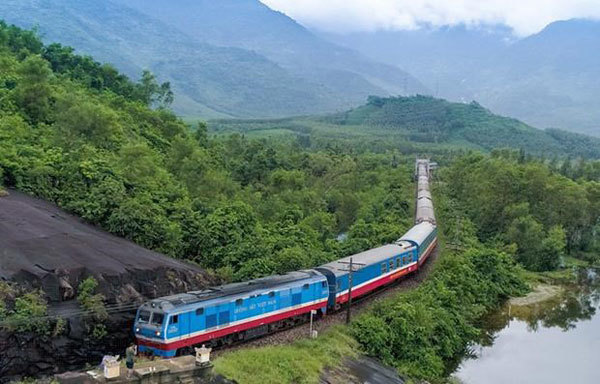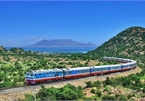 |
| A train on the North-South railway. Vietnam will need an estimated VND240 trillion up to 2030 to fund railway projects until 2030. — VNA/VNS Photo |
Prime Minister Pham Minh Chinh recently signed a decision to approve the country’s railway development plan for the 2021-30 period, which sets the goal of building nine new railways with a total length of 2,362km by 2030.
The longest is a 1,545km long high speed rail line running north-south from Ngoc Hoi Station in Hanoi to Thu Thiem Station in HCM City, with priority of investment being given to the Hanoi-Vinh and Nha Trang-HCM City sections.
The Yen Vien - Pha Lai - Ha Long - Cai Lan line will run 129km while the Ngoc Hoi - Lac Dao - Bac Hong will be 59km long.
The 102km long Hanoi - Hai Phong line, part of the Lao Cai - Hanoi - Hai Phong line, will run in parallel to the Hanoi - Hai Phong Expressway and connect with the port of Hai Phong.
In the central region, a 103km line will run from Vung Ang Port to Mu Gia Pass on the Vietnam-Laos border.
The Bien Hoa - Vung Tau line runs 84km from Trang Bom to Vung Tau stations.
There will also be two other lines linking HCM City with Can Tho and Loc Ninh, with respective lengths of 174km and 128km.
The Thu Thiem - Long Thanh line will link Long Thanh International Airport with Thu Thiem Station and only serve passengers.
Vietnam will need an estimated VND240 trillion to fund the projects.
In order to achieve planning goals, Government will continue to provide incentives for organisations and individuals to invest in the railway transportation business, including the use of land funds to develop the national network. It will further mobilise domestic and foreign resources to invest in transportation by ensuring a fair and healthy competitive environment for all economic components in this field.
According to Nguyen Danh Huy, Director of the Ministry of Transport’s Planning and Investment Department, with such a large capital need, the State’s budget will play the leading role, accounting for 80 per cent of the total investment. The remaining capital will come from the public–private partnership (PPP) investment model.
Vu Anh Minh, Chairman of the Members' Council of the Vietnam Railways Corporation (VNR) said it is necessary to clearly identify the capital sources to enable to success in calling for private and official development assistance (ODA) investment.
Director of the Vietnam Railway Authority Vu Quang Khoi said some new railway lines connecting to seaports have received more attention from investors because they have clearly defined the form of PPP investment model.
For example, the railway project from Vung Ang Port to Mu Gia Pass at the Vietnam-Laos border has a total investment of more than $5 billion, in which investment capital of Vietnam is nearly $1.6 billion under the PPP model. The consortium of Petroleum Trading Lao Public Company (PetroTrade) and Vietnam's HT Investment Construction Management Co has so far completed researches and submitted the project’s pre-feasibility study report to relevant authorities.
Source: Vietnam News

National railway development scheme with vision towards 2050 awaits approval
A national railway development scheme with vision towards 2050 awaits approval for more than 1,500km of railways.